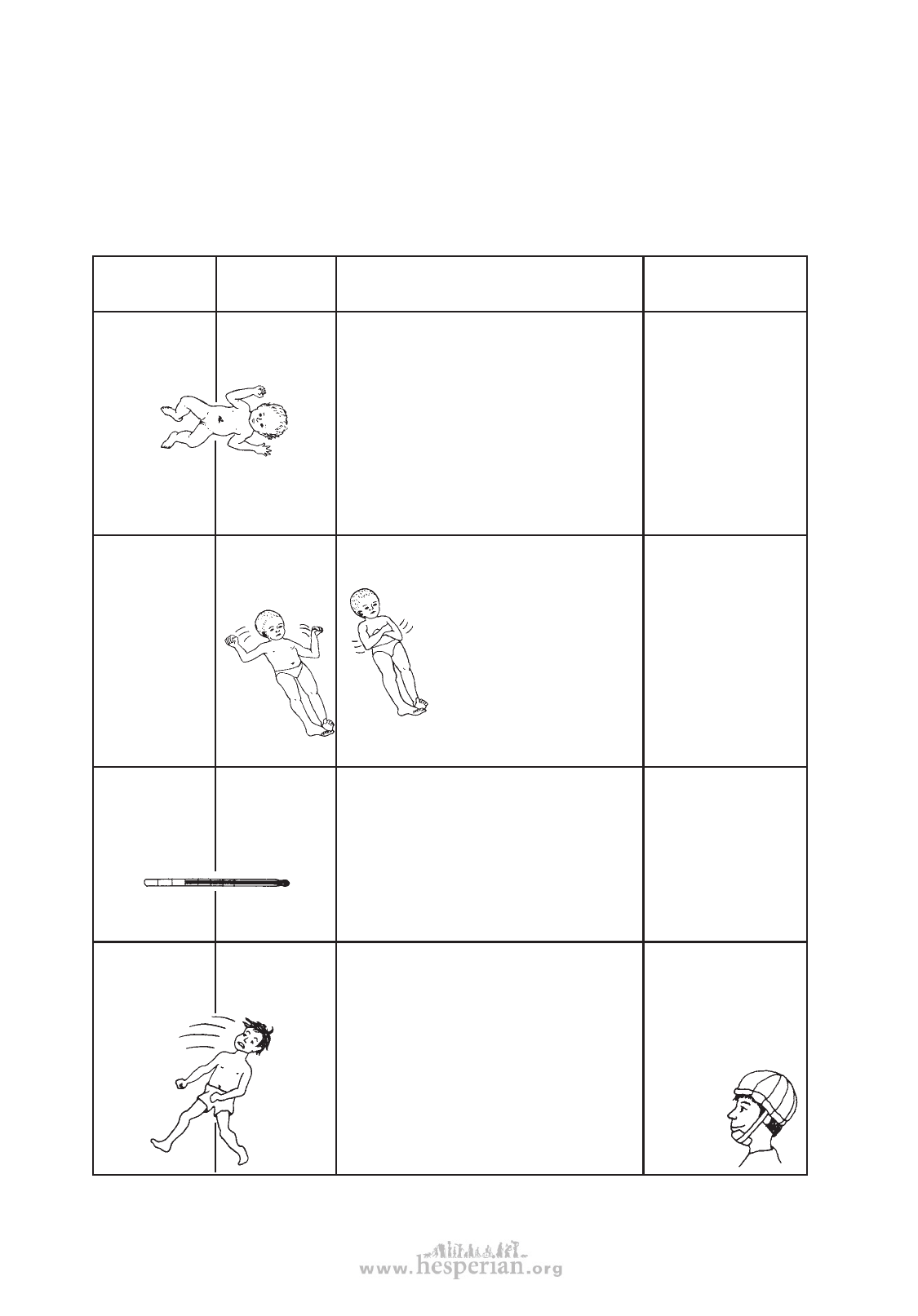
240 chapter 29
Types of epileptic seizures
Note: This information is for rehabilitation workers and parents because many doctors
and health workers do not treat seizures correctly. With care, perhaps you can do better.
However, correct diagnosis and treatment can be very difficult. If possible, get advice
from a well-informed medical worker. Ask her help in using this chart. It is adapted from
Current Pediatric Diagnosis and Treatment by Kempe, Silver, and O’Brien (Lange
Medical Publishing), in which more complete information is provided.
TYPE
Newborn
seizures
Baby spasms
(West’s
syndrome)
AGE SEIZURES
BEGIN
APPEARANCE
birth to 2 weeks
Often not typical of later seizures. May show
sudden limpness or stiffness; brief periods of
not breathing and turning blue; strange cry; or
eyes roll back; blinking or eye-jerking; sucking
or chewing movements; jerks or strange
movement of part or all of body.
WARNING: Make sure spasms are not from
tetanus or meningitis (see p. 233).
With cerebral palsy in the newborn, the baby
is usually limp. Stiffness and/or uncontrolled
movements usually appear months later, but
the baby does not lose consciousness.
3-18 months
(sometimes up
to 4 years)
Sudden opening of arms
and legs and then bending
them—or repeat patterns of
a strange movement. Spasms
often repeated in groups
when waking or falling to
sleep, or when very tired,
sick, or upset.
TREATMENT
Phenobarbital or
phenytoin. Add
diazepam if not
controlled.
(Seizures due to
brain damage at
birth are often very
hard to control.)
Corticosteroids may
be tried—but are
dangerous. Try to
get help from an
experienced doctor or
health worker. Valproic
acid or diazepam may
help.
Fever
seizures
(seizures that
only occur when
child has a fever)
6 months
to 4 years
Jolt or
‘lightening
bolt’ seizures
(Lennox-
Gastaut
syndrome)
any age but
usually 4-7
years
Most children with these spasms are
mentally slow.
Usually ‘big’ seizures (see next page) that
happen only when child has a fever from
another cause (sore throat, ear infection, bad
cold). May last up to 15 minutes or longer.
Often a history of fever seizures in the family.
WARNING: Look for signs of meningitis.
A child who has had
fever seizures on
several occasions
should be treated
with phenobarbital
continuously until age
4 or until one year after
the last seizure. Seizures
usually do not continue
in later childhood.
Sudden violent spasms of some muscles,
without warning, may throw child to one
side, forward, or backward. Usually no loss
of consciousness, or only brief.
Many children also have ‘big’ or
generalized seizures.
May be a history of ‘baby spasms’ (see above)
in earlier childhood.
Try phenobarbital, with
valproic acid. If no
improvement, consider
trying corticosteroids
as in baby spasms, or
other medicines with
medical advice.
Protect
child’s
head with
headgear
and chin
padding.
Disabled village Children